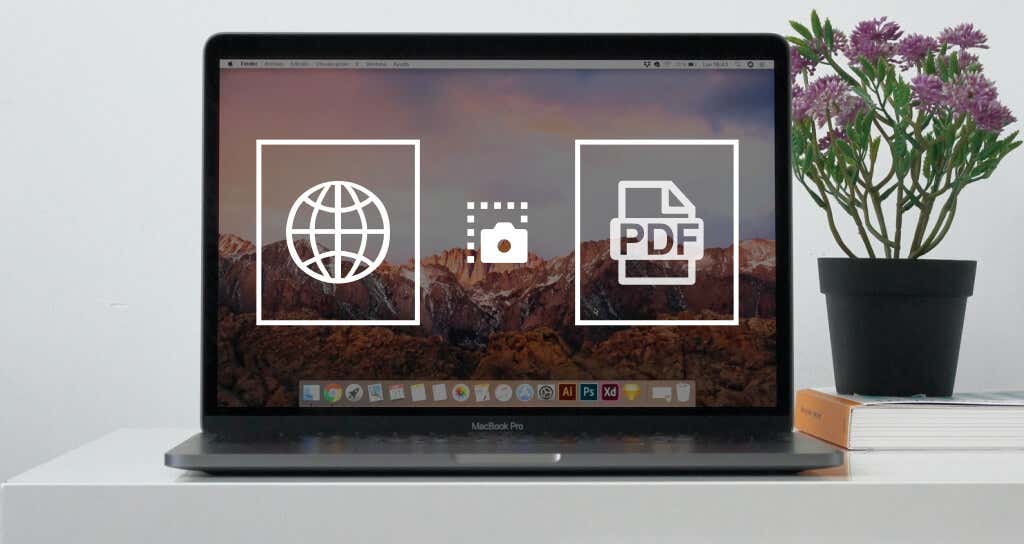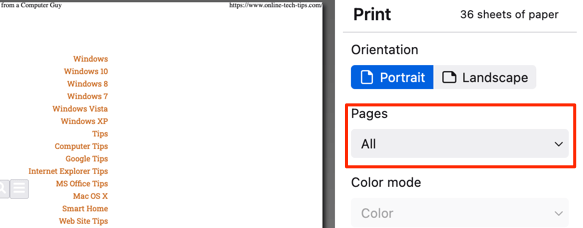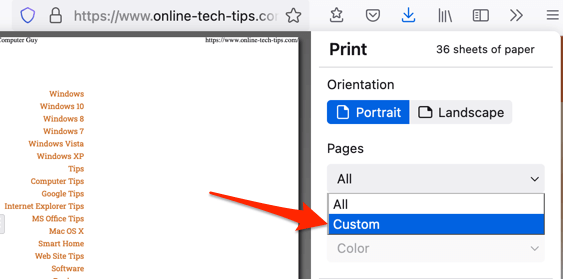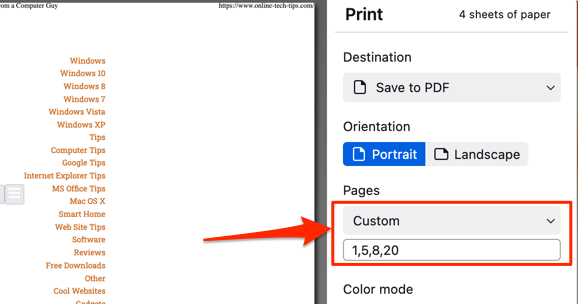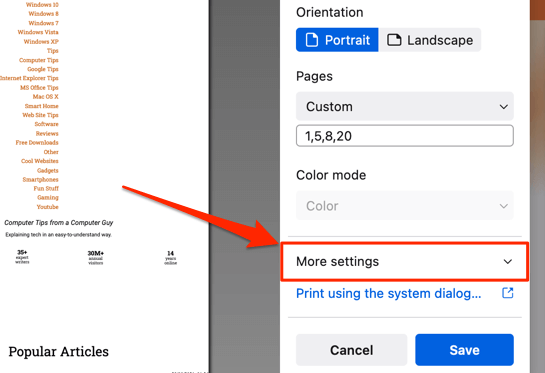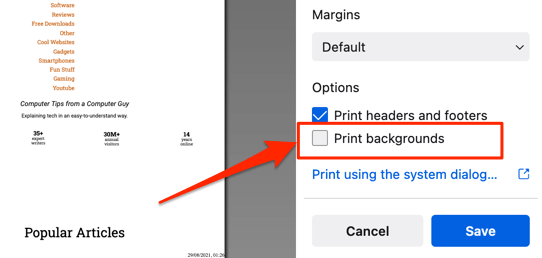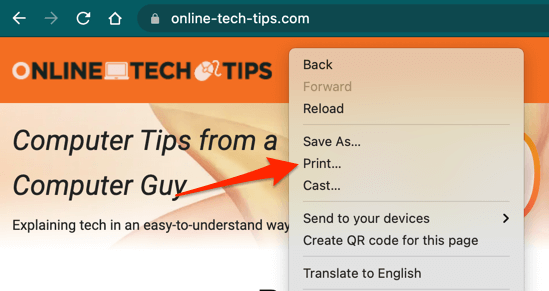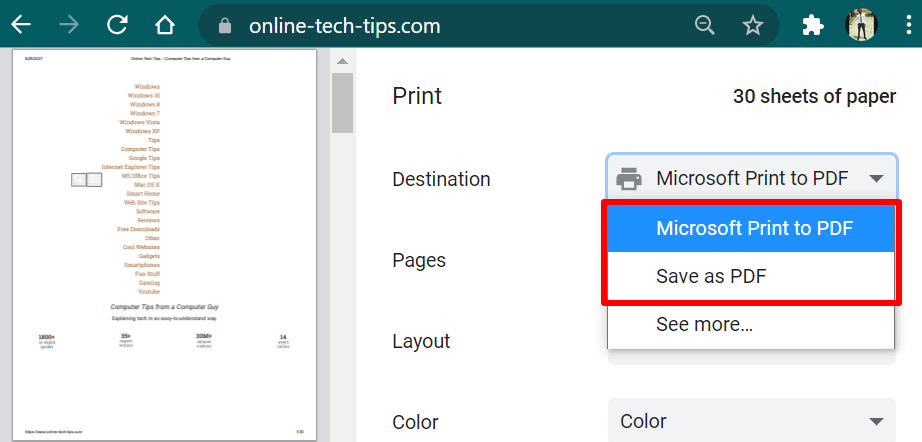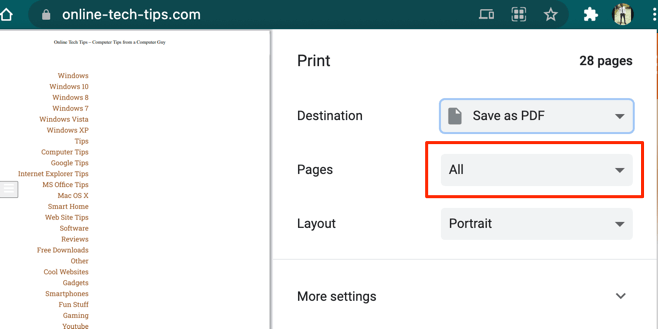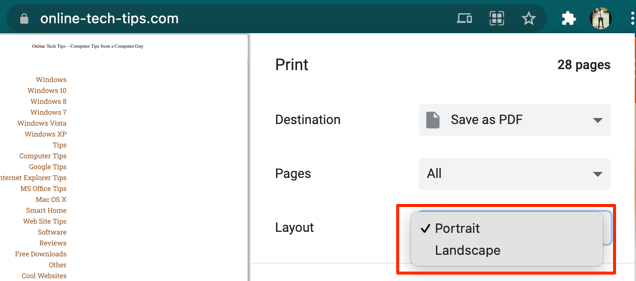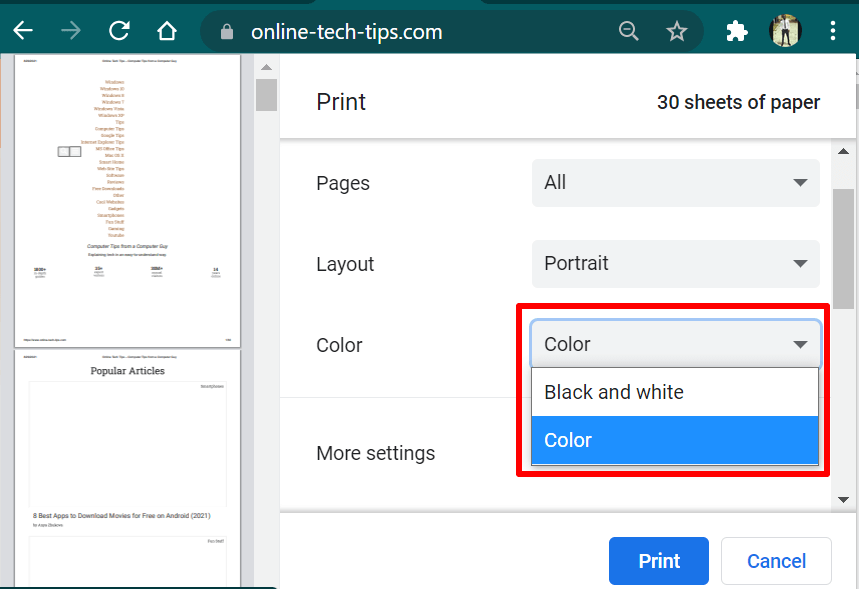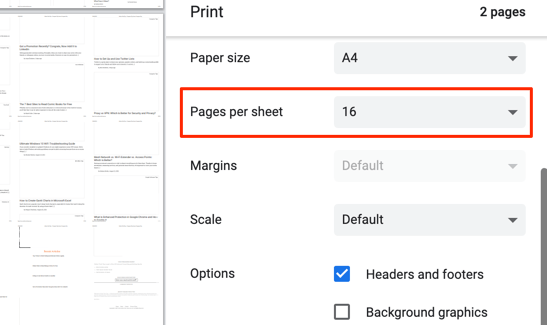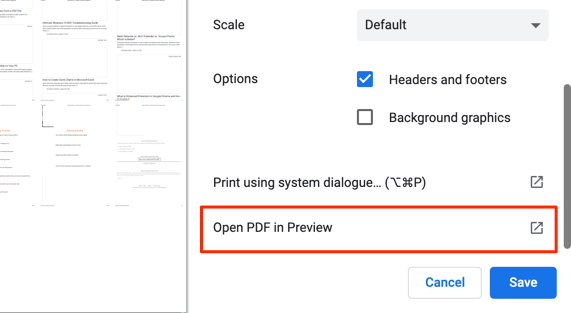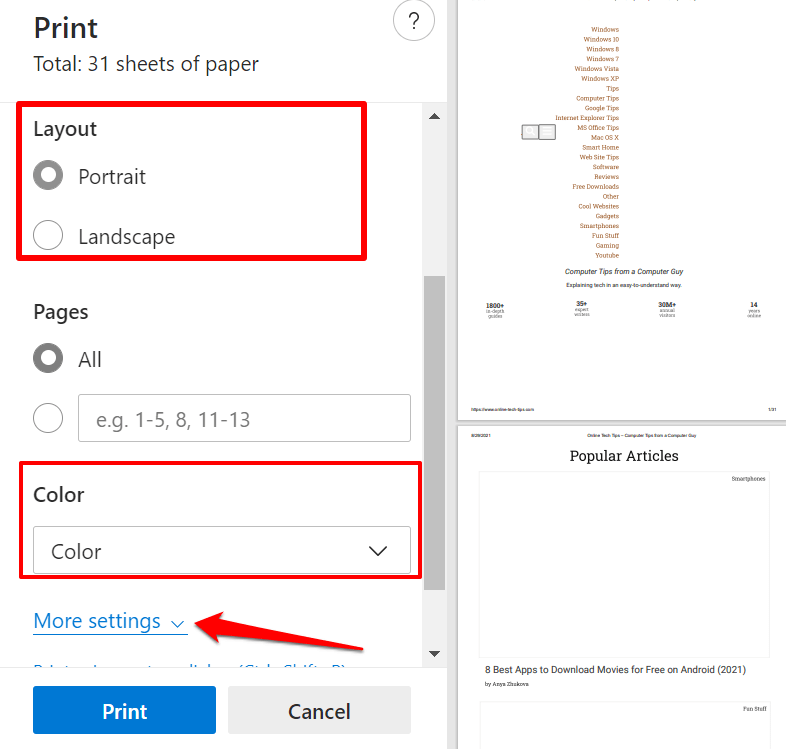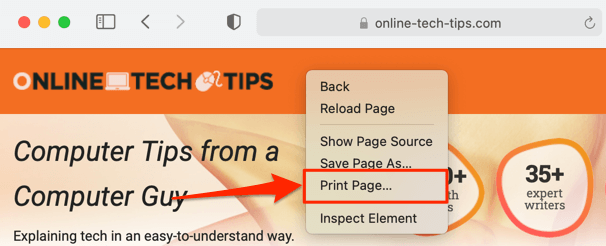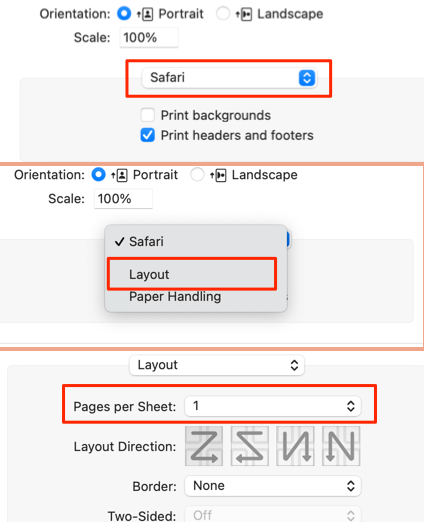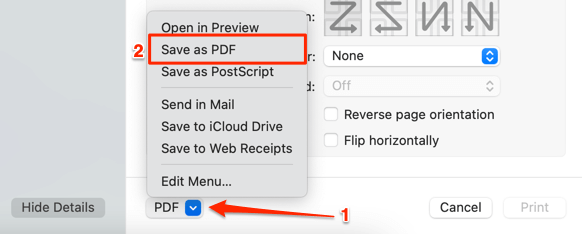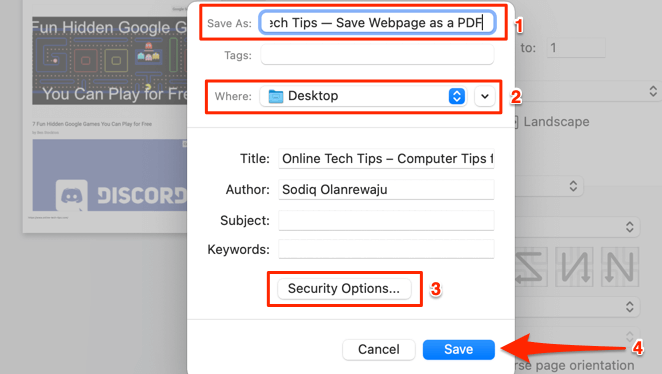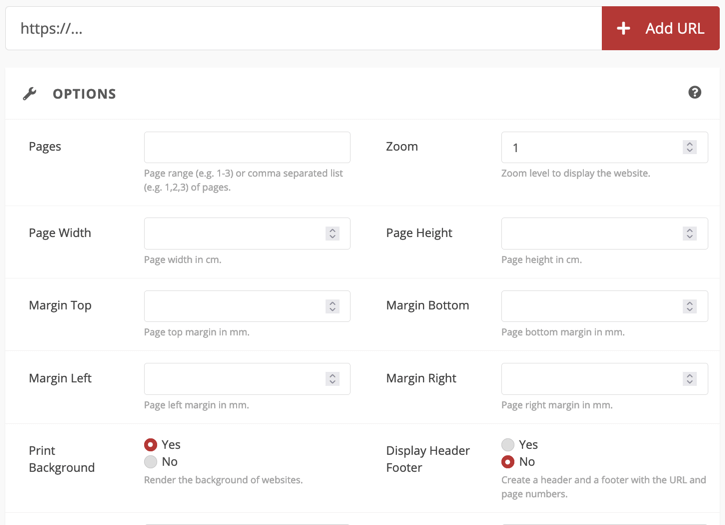To print, share, or save for later
There are many ways to save web pages for offline reading. You can either save pages within your web browser (perhaps in a reading list) or export the web pages outside your browser as screenshots, images, a Word document, PDF files, etc.
PDF files are portable, print-ready, and easily shareable. In this tutorial, you’ll learn how to save a webpage as a PDF file on your Mac and Windows devices. We cover steps for popular web browsers (Google Chrome, Mozilla Firefox, Safari, and Microsoft Edge) and reputable third-party tools.
Save a Web Page as a PDF in Firefox
Firefox’s “Print tool” lets users print web pages to physical papers (via a printer) or save them as PDF. When you launch this tool, Firefox automatically optimizes the web pages to fit different paper sizes. Each page is also assigned a page number for easy identification and sorting.
- Head to the web page you want to save as a PDF document and press Control + P (for Windows) or Command + P (in macOS) to launch the Firefox Print tool.
Alternatively, select the hamburger menu icon and select Print.
- Ensure Save to PDF is the selected option in the “Destination” section. Windows has a built-in PDF printer (Microsoft Print to PDF), so you can either select Save to PDF or Microsoft Print to PDF in the “Destination” section.
You can also choose whether you want the PDF document to display the web page in portrait or landscape orientation.
- In the “Pages” section, select All if you want to save the entire webpage as a PDF document.
Otherwise, select the Pages drop-down button, choose Custom, and enter the page number(s) containing the portion of the web page you want to save as a PDF file.
To add multiple pages to the PDF file, type the pages you want in the document and separate them with a comma.
Better yet, use a hyphen to select a range of pages you want in the PDF document. Say you want to save page 8 through page 15 and page 17 through page 30 to a single PDF document, type 8-15, 17-30 in the Custom dialog box.
By default, Firefox’s print tool doesn’t add images and page background elements to the PDF file. It only captures the page’s text component. So, if the page previews on the left side aren’t displaying images, enable “Print background” (see step #4 below) to add images to the generated PDF.
- Expand the More settings drop-down section.
- Check the Print backgrounds box.
- Select Save and choose the destination folder you want the PDF file stored on your computer.
Save a Web Page to PDF in Google Chrome
Chrome’s webpage-to-PDF generator is also embedded in the Print tool, and the steps are similar to Firefox’s.
- Go to the tab housing the web page you want to print and press Control + P (for Windows) or Command + P (for Mac).
Another way to launch Chrome’s print tool is to right-click anywhere on the page you want to print and selecting Print on the context menu.
- Select Save as PDF in the “Destination” option. If you’re using a Windows device, select either Microsoft Print to PDF or Save as PDF.
Both printer options will convert the web page to a PDF document with all relevant components (links, images, texts, etc.) included.
- To include the entire web page in the PDF document, select All in the “Pages” section.
- As with Firefox, Chrome also lets you configure the PDF’s layout. Select Portrait or Landscape in the “Layout” section.
Chrome for Windows has a “Color” feature that lets users modify the color scheme of the web page. Select Color if you want the PDF to keep the site’s color scheme. The Black and white option, on the other hand, gives pages in the PDF a monochrome look.
- Expand the More settings section to make advanced changes to the PDF.
- Chrome’s PDF generation engine is quite advanced. The “Pages per sheet” option lets you compress up to 16 pages/sections of the web page into a single sheet. That’ll reduce the number of pages in the PDF document but significantly increase its file size.
- Check the Background graphics box in the “Options” section to add images and other background designs to the PDF document. Of course, that will also increase the file size.
- On macOS devices, there’s an option to view the pre-generated PDF in Preview without saving the document locally. Select Open PDF in Preview and Chrome will display the PDF in a new Preview window.
Save a Web Page to PDF in Microsoft Edge
Google Chrome and Microsoft Edge are both Chromium-based browsers. Therefore, the steps for saving web pages as PDF files in Chrome are the same as Microsoft Edge.
Pressing Control + P (in Windows) or Command + P (in macOS) will launch the print tool that houses the PDF generator. You’ll also find the option to access the tool when you right-click the web page and select Print on the context menu.
Select Save as PDF (or Microsoft Print to PDF for Windows devices) in the “Printer” section, select your preferred page layout (Portrait or Landscape), and select the pages you want in the document, and select the More settings drop-down to make advanced changes to the PDF.
As with Google Chrome, you’ll find options to customize how many pages you want per sheet, paper size, (top, bottom, and side) margins, color scheme (Windows only), etc. Remember to check the Background graphics box if you want images included in the resulting PDF. Select Print to store the PDF document on your device.
Save a Web Page as a PDF in Safari
Converting Safari webpages to PDF documents is just as easy. The macOS browser There are two ways to save web pages as PDF documents in Safari. You can either export the page as a single-view PDF file (select File on the Safari menu bar and select Export as PDF) or save it as a multi-page PDF document.
We recommend the latter because the hyperlinks in the resulting PDF are clickable.
- Visit the web page you want to save as PDF and press Command + P. Or, right-click the page and select Print Page.
- Select Show Details below the preview to edit the PDF.
- Select the pages you want to print, choose your preferred page orientation, and check the Print backgrounds box to add images to the PDF.
- To modify the number of pages per sheet, tap the “Safari” drop-down button, select Layout, and select the number of sheets you want on a page.
- To save the web page to your Mac as a PDF document, tap the PDF drop-down at the bottom of the print tool, and select Save as PDF.
- Give the PDF document a preferred name/description, select the destination folder, and select Save. Select Security Options to password-protect the PDF file.
Save Web Page as PDF Using Online Tools
PDF generators built into your web browsers are convenient and super easy to use. However, if you don’t use the above-mentioned browsers, or your browser doesn’t have a PDF generator, or you want to save a web page as a PDF on your mobile device, online web page converters (like Sejda and CloudConvert) will come in handy.
For Sejda, enter the URL of the web page in the dialog box and select the Convert HTML to PDF button. Your browser should automatically download the PDF format of the provided URL.
CloudConvert is our favorite because it sports advanced features you’d find in web browsers’ PDF generators. You can select the pages (or page range) you want to print, customize page size, print background graphics, etc.
The resulting PDF documents exported from the above-mentioned techniques and tools should have all components of the original web page—texts, images, ads, hyperlinks, and other multimedia files. Embedded videos, on the other hand, will have their thumbnails or the last frame displayed on the web page at the point of conversion.


